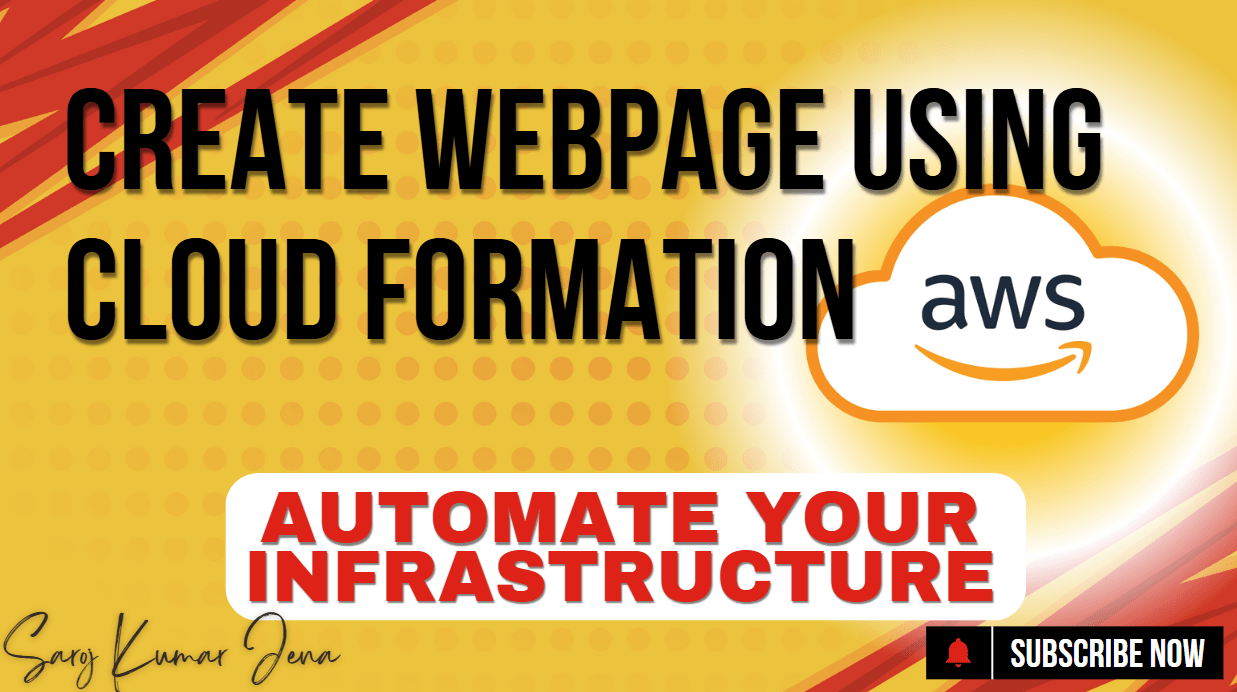Automate aws Infra using CloudFormation: Deploying AWS infrastructure manually can be time-consuming and error-prone. AWS CloudFormation allows you to automate deployments using Infrastructure as Code (IaC). In this guide, you’ll learn how to:
✅ Deploy a static website on S3 using CloudFormation
✅ Set up Amazon Connect resources (optional)
✅ Automate infrastructure provisioning for consistency
For a detailed walkthrough, check out my YouTube.
Step 1: Understand the CloudFormation Template
CloudFormation uses YAML or JSON templates to define AWS resources. Below is a sample template that:
- Creates an S3 bucket for static website hosting
- Configures public access policies
- Deploys a sample HTML webpage
Sample CloudFormation Template (website-template.yml)
AWSTemplateFormatVersion: '2010-09-09'
Description: 'Deploys a static website on S3 for Amazon Connect integration'
Resources:
# S3 Bucket for Static Website Hosting
StaticWebsiteBucket:
Type: 'AWS::S3::Bucket'
Properties:
BucketName: !Sub 'my-static-website-${AWS::AccountId}'
AccessControl: 'PublicRead'
WebsiteConfiguration:
IndexDocument: 'index.html'
ErrorDocument: 'error.html'
# Bucket Policy to Allow Public Access
BucketPolicy:
Type: 'AWS::S3::BucketPolicy'
Properties:
Bucket: !Ref StaticWebsiteBucket
PolicyDocument:
Version: '2012-10-17'
Statement:
- Effect: 'Allow'
Principal: '*'
Action: 's3:GetObject'
Resource: !Sub 'arn:aws:s3:::${StaticWebsiteBucket}/*'
# Sample HTML File (Optional - can be uploaded separately)
SampleIndexPage:
Type: 'AWS::S3::Bucket'
Properties:
BucketName: !Ref StaticWebsiteBucket
Content: |
<!DOCTYPE html>
<html>
<head>
<title>Amazon Connect Demo</title>
</head>
<body>
<h1>Welcome to Amazon Connect!</h1>
<!-- Amazon Connect Chat Widget Code Here -->
</body>
</html>
Key: 'index.html'
ContentType: 'text/html'
Outputs:
WebsiteURL:
Description: 'URL of the static website'
Value: !GetAtt StaticWebsiteBucket.WebsiteURL
Step 2: Deploy the CloudFormation Stack
2.1. Upload the Template to AWS
- Go to the AWS CloudFormation Console.
- Click “Create stack” → “With new resources (standard)”.
- Choose “Upload a template file” and select your
website-template.yml. - Click Next.
2.2. Specify Stack Details
- Stack name:
StaticWebsiteStack - (Optional) Modify parameters if needed.
- Click Next.
2.3. Configure Stack Options (Optional)
- Add tags (e.g.,
Project: AmazonConnect). - Click Next.
2.4. Review & Deploy
- Verify settings.
- Check the “I acknowledge that AWS CloudFormation might create IAM resources” box.
- Click “Create stack.”
2.5. Monitor Deployment
- The stack will take 1-3 minutes to deploy.
- Once complete, check the “Outputs” tab for the Website URL.
Step 3: Integrate Amazon Connect (Optional)
To add an Amazon Connect chat widget to your static website:
- Get the Chat Widget Code from Amazon Connect (Channels → Chat).
- Edit the
index.htmlin your S3 bucket and paste the widget script. - Test the chat by visiting your CloudFormation-generated website URL.
Step 4: Automate Updates (Optional)
To update your infrastructure later:
- Modify the CloudFormation template (e.g., add a CloudFront CDN).
- Update the stack via the CloudFormation console.
Final Thoughts & Video
✔ Automate AWS infrastructure with CloudFormation.
✔ Deploy a static website quickly for Amazon Connect.
✔ Ensure consistency across environments.
For a full demo, check out my YouTube.
Video: Automate aws Infra using CloudFormation
Need help? Drop your questions in the comments! 🚀
Checkout – Amazon Connect

